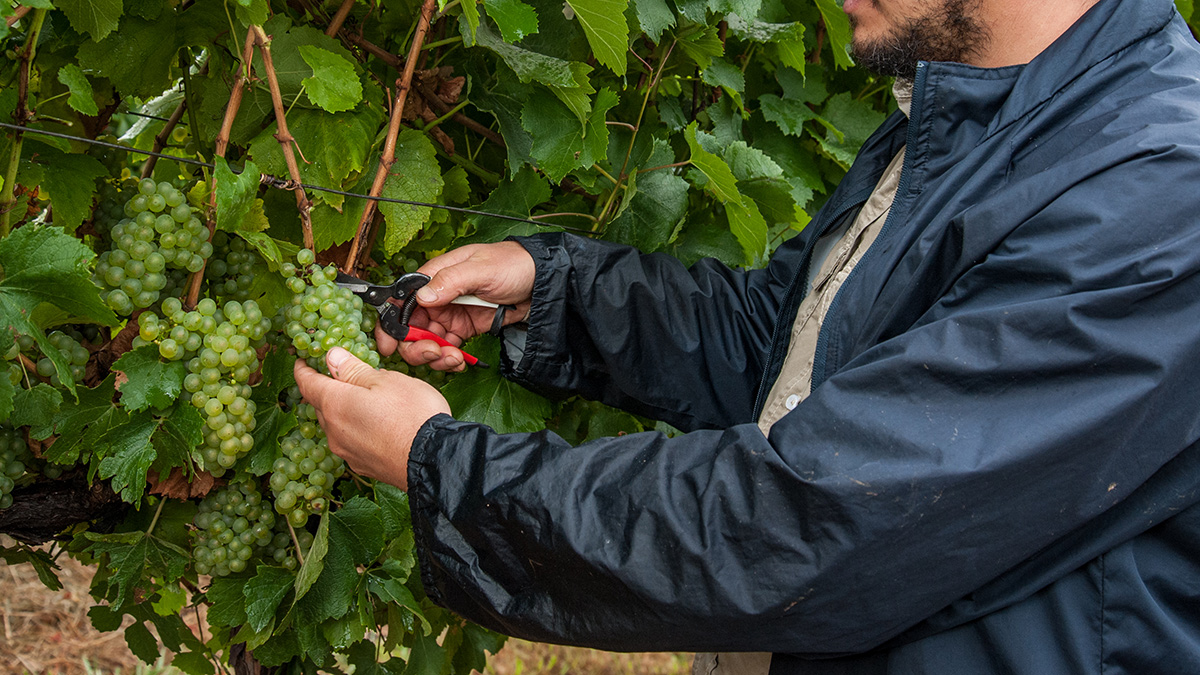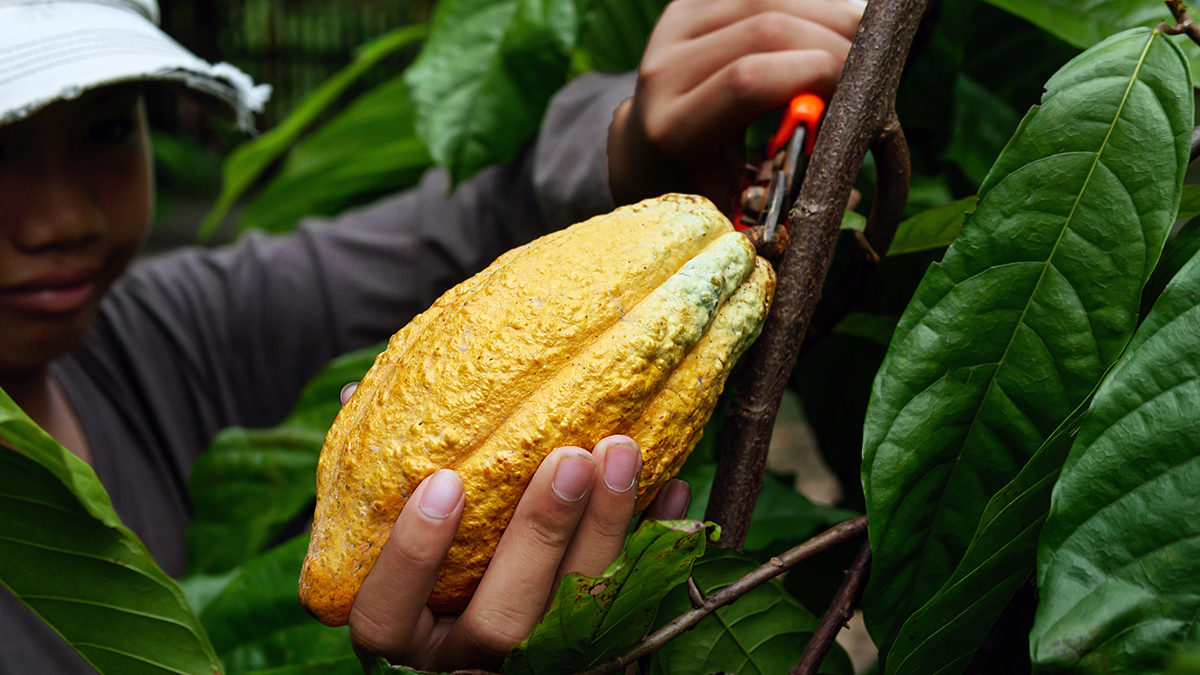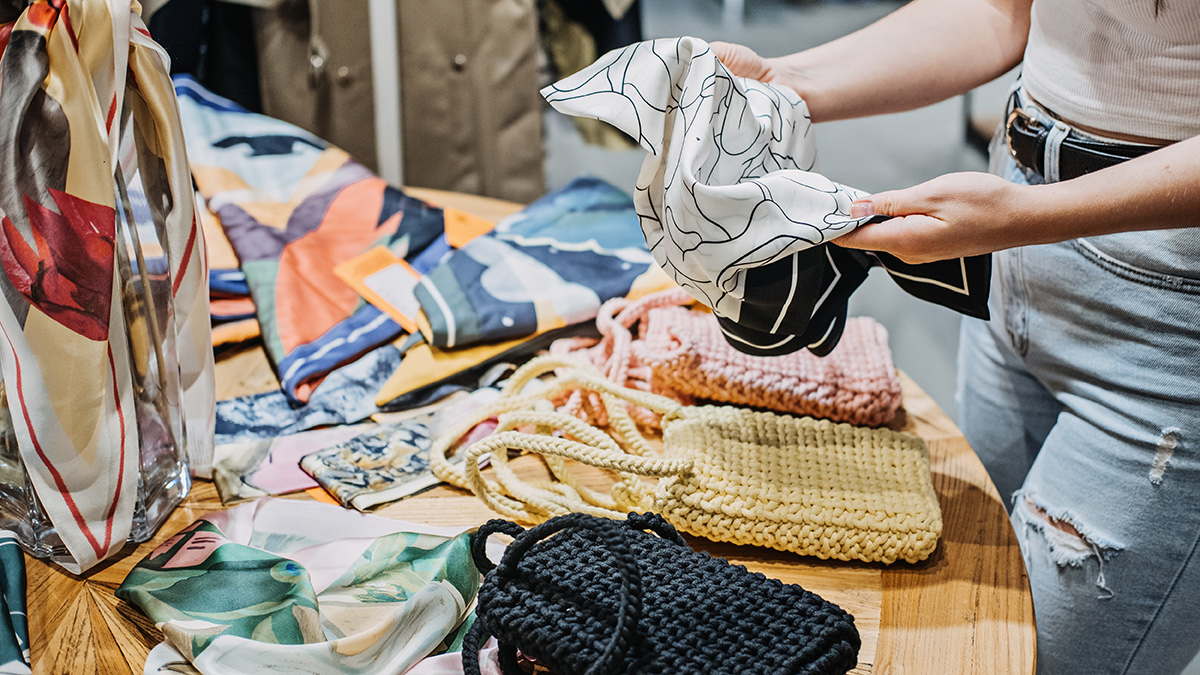Get our independent lab tests, expert reviews and honest advice.
Is Australia waking up to its textile waste problem?
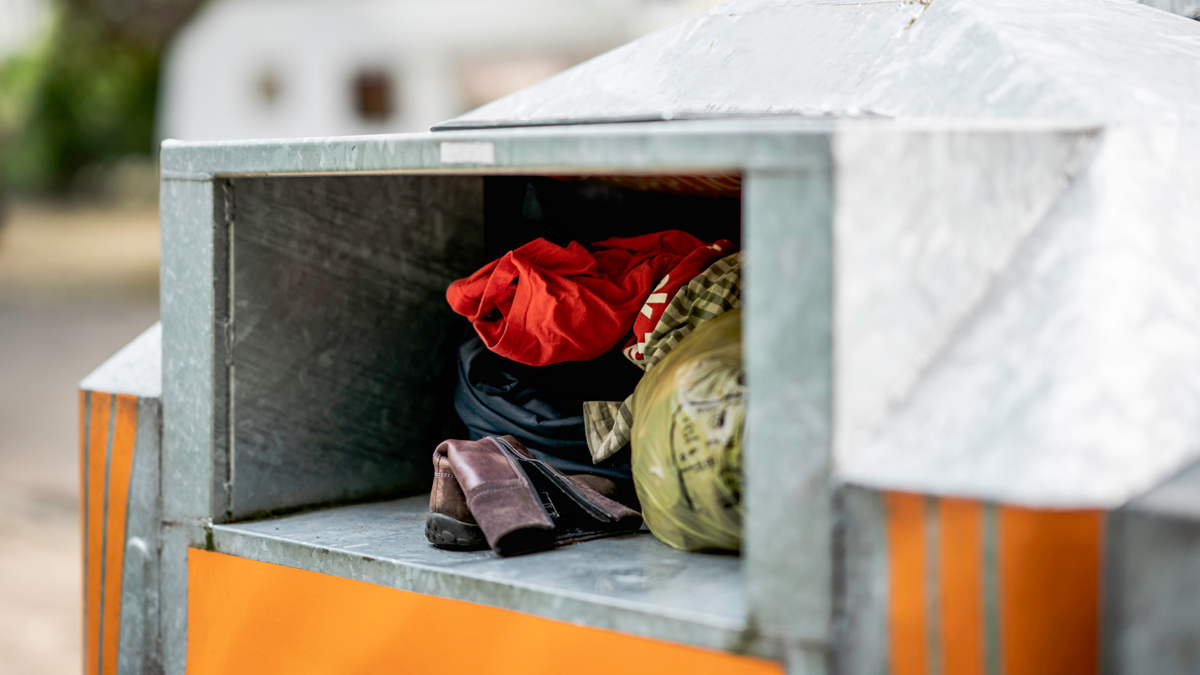
Need to know
- Every year, Australians buy an average of 27kg of new clothes and throw 23kg away
- Australia’s yearly consumption of textiles is second only to that of the US
- We talk to experts about the ways consumers can help reduce textile waste
Clothes are big business in Australia, and we buy a lot of them. We also throw a lot of them away.
According to the federal Minister for the Environment, Sussan Ley, our yearly consumption of textiles, in fact, is second only to that of the US.
The numbers tell the story. Every year, Australians buy an average of 27kg of new clothes and purge our wardrobes of 23kg. In 2018-19, Australia generated 780,000 tonnes of textile waste, only seven percent of which was recycled (the rest went to landfill).
Waking up to the crisis
What we do with our old clothes is causing some pretty big problems.
As minister Ley recently put it, “we want to keep clothing out of landfill, where it can take hundreds of years to break down, releasing harmful carbon emissions along the way”.
Australia’s Assistant Minister for Waste Reduction and Environmental Management, Trevor Evans, points out that “Australians discard close to 800,000 tonnes of clothing and textiles each year, a rate of 15 tonnes every 10 minutes”.
Big business
The government is waking up to the textile waste crisis, but the clothing industry appears to be woven into the fabric of our economy.
A report by the Australian Fashion Council (AFC) that came out a few days after Ley’s remarks sought to remind the public of the industry’s contributions. The report claims that the local fashion and textiles industry generates more than $27.2 billion for the Australian economy and employs 489,000 people, more than either mining or utilities.
Amid the competing priorities of selling clothes and protecting the planet, are we making progress toward reducing textile waste?
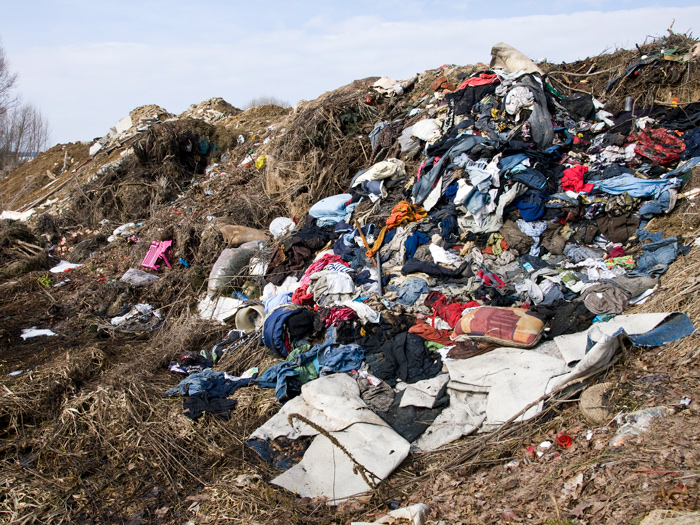
Reforming our throwaway fashion culture
In recent months there’ve been signs that both governments and the textile industry are waking up to the problem.
The ministers unveiled the stark statistics at the first ever National Roundtable on Clothing Textile Waste in late May, an event that “saw industry disruptors, retailers, reuse charities, fibre producers, academics, and waste management companies come together to talk about Australia’s throwaway fashion culture”.
And NGOs say they’re also working with industry to stem the flow of cast-off clothes.
‘Committed to coordinated action’
The CEO of Charitable Recycling Australia, Omer Soker, tells CHOICE the organisation is part of a clothing “dream team” that’s pushing for a product stewardship scheme around clothing.
That effort is being led by the AFC and includes the UK-based WRAP, the National Retail Association, the Waste Management and Resource Recovery Association, Sustainable Resource Use and “dozens of other stakeholders committed to coordinated action on clothing,” Soker says.
Charitable Recycling Australia, which works with a wide range of charitable organisations including the Salvation Army (Salvos) and the St. Vincent de Paul Society (Vinnies), envisions a ‘circular economy’ of textiles in which nothing ends up in landfill.
And there are examples of industry moving in the right direction. According to the market-leading Swedish multinational clothing retailer H&M Group, 5.8% of its commercial goods were made from recycled materials in 2020, up from 0.62% in 2017. (The company says it’s aiming for 30% by 2025.)
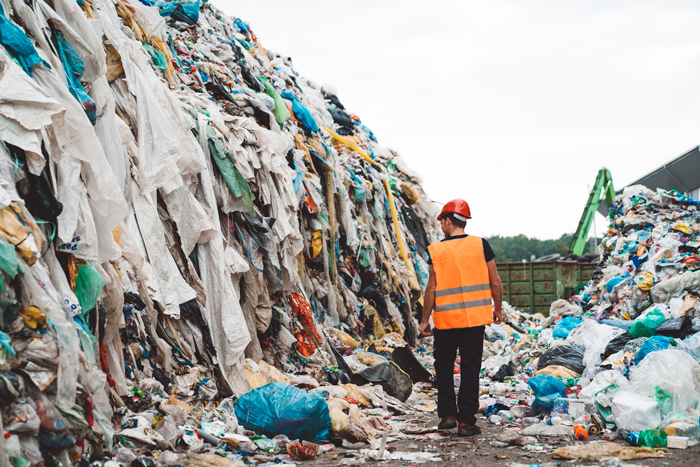
Keeping textiles in circulation
In late July, Monash University’s Sustainable Development Institute released a guide tracking the life cycle of a T-shirt in an effort to help both consumers and clothes makers better understand what creates textile waste – and how to reduce it.
Victoria’s Minister for Energy, Environment and Climate Change, Lily D’Ambrosio, spoke at the guide’s launch, saying “it’s time for all of us to reconsider our relationship with clothing. Textiles are too valuable to be worn once or twice and then discarded. Just like glass, paper and plastic, we need to establish a more sustainable system for textiles that keeps items in circulation for as long as possible”.
Getting it right from the start
Two of the Monash researchers, Julie Boulton and Aleasha McCallion, told CHOICE they consulted widely with industry when developing the guide, and found a genuine commitment to reducing waste.
It all starts with what’s used to make the clothes in the first place, the researchers say.
You can’t just say ‘let’s just recycle’ because it depends on what’s been put in at the beginning
Julie Boulton, Monash University Sustainable Development Institute
“We’ve seen the focus on plastics, paper, tyres, glass, and it’s great that attention is now finally being turned to textiles,” Boulton says.
“But focusing on waste is only half of the story. That’s why we’re looking at textiles from a completely circular point of view, where you focus at the input stage and go all the way to the waste. You can’t just say ‘let’s just recycle’ because it depends on what’s been put in at the beginning.”
Government support needed
McCallion seconds that point, saying “industry is heavily invested in trying to source the best possible inputs, and at the same time looking at product stewardship and recycling capability. But they also need government support with infrastructure so that everybody can actually access recycling”.
“I think what we’re seeing across the board is definitely a shift,” Boulton adds. “And some of it’s been driven because consumers are definitely more aware and are coming to businesses saying, what are you doing?”
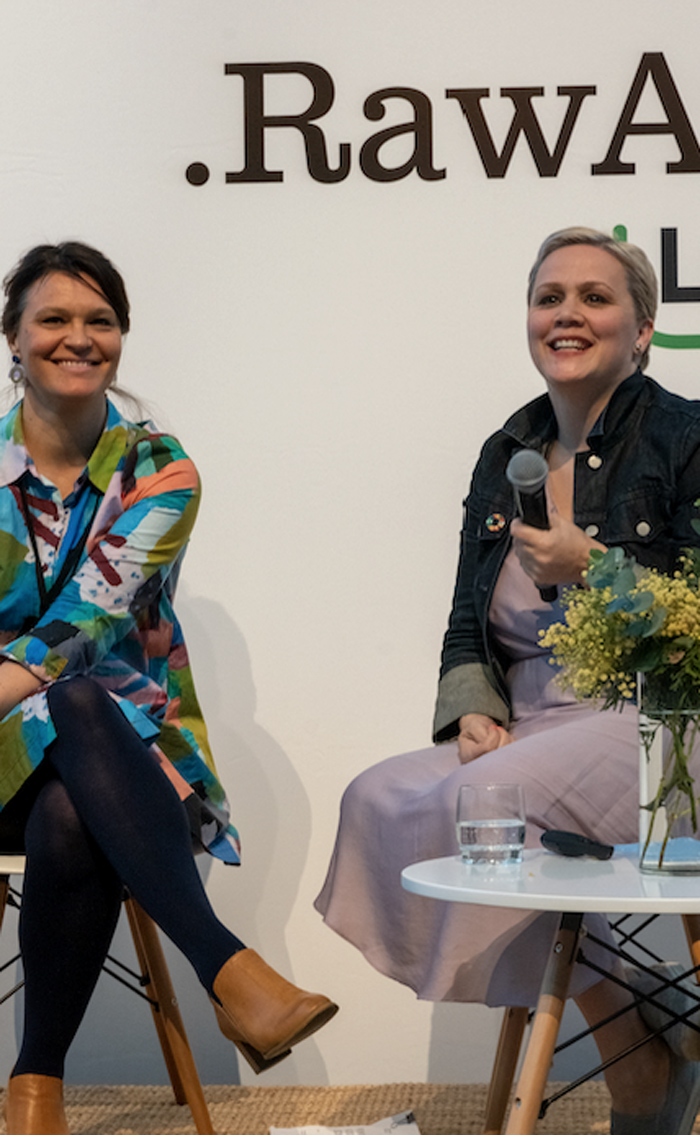
Australia playing catch-up
But one longtime industry insider, Adrian Jones, says Australia has historically lagged behind some other countries in both recognising and dealing with the textile waste problem.
Jones is a co-founder of BlockTexx, a Sydney firm that specialises in “textile recovery technology”. He’s held executive roles at major retailers in the UK and Australia, and is a former CEO of APG, maker of the brands Sportscraft and Saba.
“Textiles until very recently weren’t even recognised as a waste stream by local or federal governments,” Jones says. “People would concentrate on the traditional waste streams of paper, glass and plastic bottles without understanding that 70% of the world’s textiles contain exactly the same chemicals.”
Until recently, reliable government data on textile waste has also been in short supply.
“Over the last six to 12 months there’s been a lot more good data coming through,” Jones says. ” But there’s a long way to go in terms of people really understanding the impact of textile consumption and the impact of textile waste. Despite rumours to the contrary, the problem is enormous, and the problem is not going away.”
Consumer awareness growing
Although industry groups such as the AFC tend to emphasise jobs and dollars and downplay the waste problem, “I think the consumer is much smarter than that, and far more aware and willing to have a discourse around environmental damage,” Jones says.
“The industry is more than aware that for a long time it’s had a massive impact on the environment and produces significant amounts of waste.”
Not surprisingly, the rapid rise of throwaway apparel from the likes of H&M and Uniqlo has contributed disproportionately to the waste problem.
“Over the last 10 years they’ve seen increases in their volumes of sales five or six times the growth of population [in their markets],” Jones says. “The growth of fast fashion has been a huge driver of textile waste.”
Charity drop-offs: Would you give it to a friend?
In her statement, minister Ley also raised the issue of charities including Vinnies and the Salvos becoming dumping grounds for unwanted clothes, saying that charities “are not the place to send our tatty, pre-loved clothes that are barely hanging by a thread, and no amount of wishcycling will change that”.
Omer Soker would largely agree with that view. But charities do still want some of our old clothes, and the sector currently has capacity “to accept double the amount of quality, wearable items” it receives, Soker says.
If you wouldn’t give it to a friend, please don’t give it to charity
Charitable Recycling Australia CEO Omer Soker
“Charities can only use quality donations that are not torn, broken or stained. The best way to identify whether an item is donatable is – if you wouldn’t give it to a friend, please don’t give it to charity.”
And Soker stresses that donatable clothes should be dropped off in the shop or placed securely in a charity bin, not left on the ground around it.
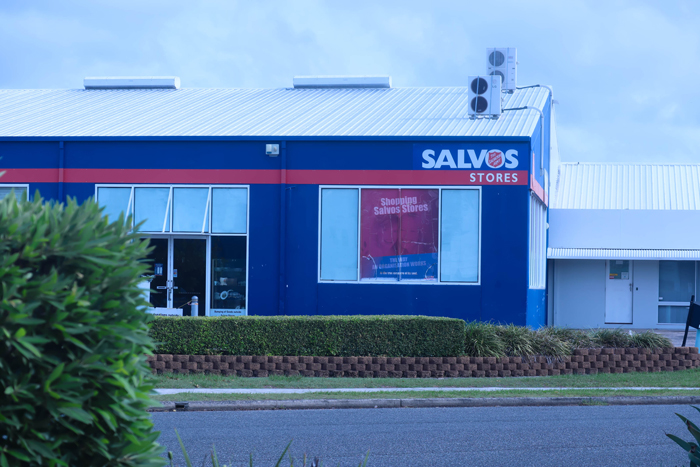
Donations to low-income countries
According to Soker, 86% of donations can be used and 14% goes to landfill.
“Some donated clothing that is unable to be sold in store, even at heavily discounted prices, is exported for reuse in low-income countries, providing individuals there with wearable garments and providing a low-income return for charities to put towards social welfare,” Soker says.
“But charities always encourage quality donations that can be sold in store. Some fabrics are suitable to be used as rags, but charities need quality wearable clothing that can be reused and resold in Australia.”
Consumers in the driver’s seat
The experts we spoke to are closely aligned on one point: consumers have the power to drive change. McCallion cites food as an example, pointing out that growing consumer demand to know where our food comes from and what’s in it led to the organic food movement and wholesale change across the industry.
Now that’s happening with clothing, McCallion says.
As much as we might be lagging, there’s actually a great opportunity for state and federal governments here to adopt best practices from around the world
Aleasha McCallion, Monash University Sustainable Development Institute
Experts agree that change doesn’t necessarily mean avoiding $5 shirts at Kmart and Big W. Fast fashion has certainly accelerated the waste issue, they say, but the aim should be to improve practices at that end of the market too, not abolish it. (The experts also point out that Kmart and other discount retailers do at least have sustainability programs in place.)
“I think we need to be very careful in the environmental movement and the sustainability movement, particularly in the textile space, that we don’t try to shame people into better habits,” Adrian Jones says.
“People say you should buy higher value clothing and you should wear it for longer. I totally agree with that, but not everybody can afford to pay $180 for a plaid shirt.”

Small actions, big difference
As with environmental issues in general, small actions by many can make a big difference overall.
“The best form of recycling is re-use or repair, without the shadow of a doubt,” says Jones. “Buy the clothes you want and the clothes you can afford, but have access through those brands to the right to repair.”
Just buy less
People should also try to buy less, says Jones. “If everybody in the country were to buy one less item of clothing every six months, that’s many millions of garments that wouldn’t be purchased every year and end up in landfill,” he says. “Everybody’s wardrobe can bear two less items.”
The result would be hundreds of thousands of tonnes of garments that didn’t end up in landfill, Jones says.
While acknowledging that both industry and government have been slow to get moving on the textile waste problem, the good news, McCallion says, is that “Australia has some great opportunities to leapfrog and gain a lot of ground that has already been covered”.
“As much as we might be lagging, there’s actually a great opportunity for state and federal governments here to adopt best practices from around the world and take a huge step forward.”
What to do with clothing that’s not fit to donate
- Wondering if it’s fit to donate? Check this video from the NSW Environmental Protection Authority.
- NSW residents can also download the ‘Recycle Mate’ app from the EPA – it identifies which suburb you’re in and gives information about your council’s recycling collection system.
- Regardless of your state or territory, ask your local council about other options before putting your clothes in the bin and consigning them to landfill.
- Ask yourself: Does it really need to be chucked, or can it still serve a purpose as a rag?
- Planet Ark gives a list of retailers with garment collection programs and offers guidance on who can use your throwaway clothes.
- The sustainability-minded service Clothing Cleanup lets you book online and have your unwanted clothes collected from your home.
- 100% organic cotton items are compostable.
- Check for manufacturer’s instructions on what to do with the used garment, such as using a takeback scheme.
- Ask yourself: Can I use it to make a new garment?
- Check for social enterprises or repair shops in your area that can use discarded textiles.
- Check with your local churches, charities and other places or worship – some have op shops of their own.
- Try selling the clothes you don’t want on platforms such as Facebook Marketplace or eBay.
- A number of services are looking for unwanted clothes, including Dress for Success and Fitted for Work (clothes for job interviews and the like), ClothesLine (to help the homeless and needy), and Support the Girls (looking for bras in wearable condition).
- Check with other social support organisations, such as those helping the homeless or victims of domestic abuse.
Making a sustainable T-shirt
The onus is on industry to use materials that create less waste. Researchers from Monash University’s Sustainable Development Institute recommend the following:
- Certified organic cotton – preferably Global Organic Textile Standard (GOTS) or Organic Cotton Standard (OCS)
- Wool – Responsible Wool Standard (RWS) certified
- Silk – organic and/or peace silk)
- Linen
- Hemp
- Regenerated cellulosics
- Single fibre – mono material
- 100% recycled polyester – preferably certified recycled in accordance with the Global Recycled Standard
- Recycled cotton
- Lyocell fibers made with REFIBRA technology in different blends


